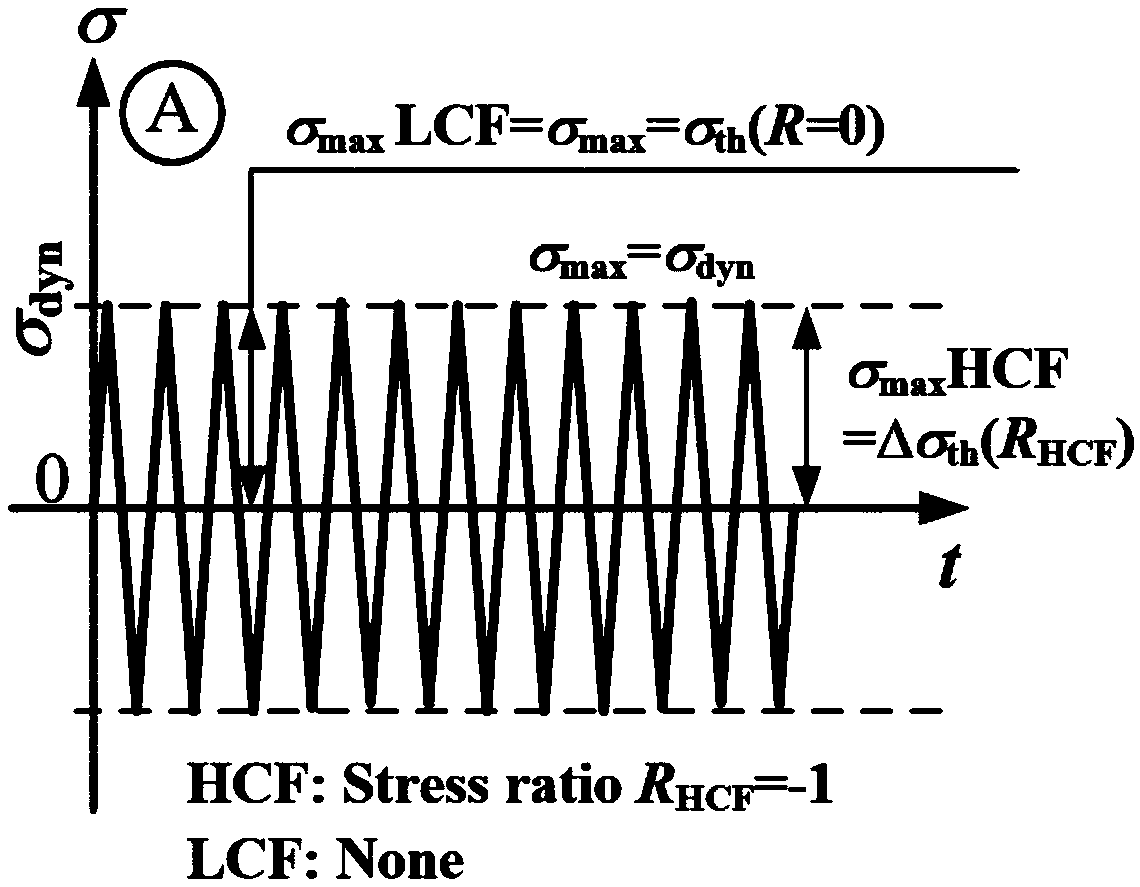Method for determining available limit of crack-type hard object damage of concave and convex of blade by taking high and low cycle fatigue into account
A technology of low cycle fatigue and determination method, applied in the direction of using repetitive force/pulsation force to test the strength of materials, measuring devices, instruments, etc., can solve the problem of tearing/crack-type hard object damage, lack of reasonable specification and available limit formulation process, etc.
- Summary
- Abstract
- Description
- Claims
- Application Information
AI Technical Summary
Problems solved by technology
Method used
Image
Examples
Embodiment
[0059] A method for determining the available limit of crack-type hard object damage on the back of blade pots considering high and low cycle fatigue, including the following steps:
[0060] (1) Extract the possible high cycle fatigue load and low cycle fatigue load from the high / low cycle composite fatigue load on the leaf pot and the back of the blade. Among them, high cycle fatigue load is High cycle fatigue load, HCF for short, and low cycle fatigue load is Low cycle fatigue load, LCF for short.
[0061] The high / low cycle composite load of the blade refers to the interaction between the low-frequency centrifugal force cyclic load and the high-frequency vibration load of the blade when the engine is working normally, such as figure 1 Shown. In the present invention, the centrifugal force cyclic load in the blade is recorded as low-cycle fatigue load, that is, low-cycle fatigue load, and the high-frequency vibration load in the blade exceeding 1KHz is recorded as high-cycle fat...
PUM
 Login to View More
Login to View More Abstract
Description
Claims
Application Information
 Login to View More
Login to View More - R&D
- Intellectual Property
- Life Sciences
- Materials
- Tech Scout
- Unparalleled Data Quality
- Higher Quality Content
- 60% Fewer Hallucinations
Browse by: Latest US Patents, China's latest patents, Technical Efficacy Thesaurus, Application Domain, Technology Topic, Popular Technical Reports.
© 2025 PatSnap. All rights reserved.Legal|Privacy policy|Modern Slavery Act Transparency Statement|Sitemap|About US| Contact US: help@patsnap.com



